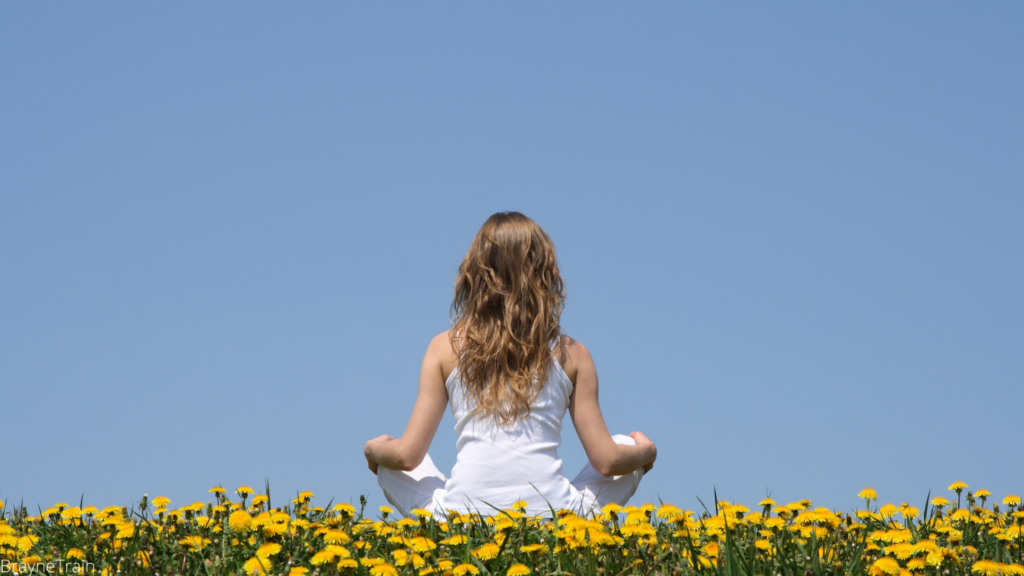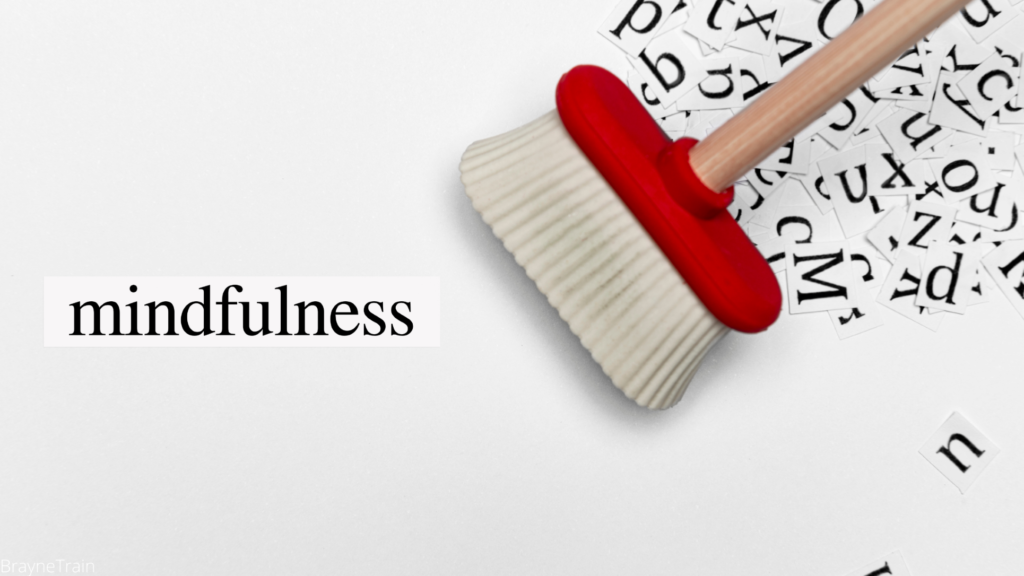
Can Mindfulness Practice Reduce Stress and Anxiety?
If you have heard of mindfulness practice, but are not sure of its meaning or benefits, this post is for you.
Mindfulness is the practice of being aware of the present moment.
Practicing mindfulness means paying attention to what you are doing as you are doing it without any judgment.
Numerous studies have shown that mindfulness practice can change brain wiring. This change leads to increased cortical thickness, which is associated with improved cognitive function and emotional regulation. As a result, mindfulness can reduce negative emotions such as anxiety and stress.
In this blog post, we will explain all the benefits of mindfulness practice including its amazing effect on reducing stress and anxiety, and we’ll provide you some tips on how to get started.
Keep reading to find out!
Table of Contents:
- Benefits of mindfulness practice.
- 5 ways to practice mindfulness.
- How to practice mindfulness during stressful situations.
- Mindfulness practice for parents.
- Mindfulness rewires your brain.
- Mindfulness and the 4 pillars of a healthy mind.
- Takeaway.

Benefits of Mindfulness Practice
A growing body of research suggests that mindfulness practice can help reduce stress and anxiety.
In 2010, Hoffman et al. conducted a meta-analysis of 39 studies exploring the use of mindfulness-based stress reduction and mindfulness-based cognitive therapy.
The researchers concluded that mindfulness-based therapy may help alter affective and cognitive processes. In other words, mindfulness can change your brain for the better.
Mindfulness practice has been shown to help people become more aware of their thoughts and feelings and regulate their emotions better.
Top 10 Benefits of Practicing Mindfulness:
- Reduced Stress & Anxiety
- Better Sleep
- Improved Self Control
- Increased Self Esteem
- Enhanced Flexibility
- Increased Compassion
- Increased Concentration
- Mental Clarity
- Becoming Less Judgmental
- Increased Emotional Intelligence
In addition, mindfulness practice has been linked to reductions in rumination, worry, and negative thinking.
5 Ways To Practice Mindfulness

Nature Walk
One popular way of mindfulness practice is to take a nature walk. This can be done anywhere in nature, such as in the parks, woods, or on the beach.
Walking allows you to be present in the moment and to pay attention to your surroundings. You can notice the sights, sounds, and smells of nature and feel the sensations of walking.
Walking barefoot on the beach or hiking through a forest can help you ground yourself and appreciate the beauty of the natural world.
Swimming in the ocean is another great way to practice mindfulness. It allows you to connect with the elements and appreciate the power of nature.
Mindful Eating
Mindful eating is when you focus your attention on the present moment while eating.
This means being aware of your food’s taste, smell, appearance, and texture. It also means being aware of your thoughts and feelings while you are eating your food.
To practice eating mindfully:
- Turn off the TV, phone, and computer.
- Sit at a table, or a place you can eat your food peacefully.
- Eat slowly and chew each bite thoroughly.
- Notice the taste, smell, appearance, and texture of your food.
- Be aware of your thoughts and feelings about food.
- If you begin to think about something else, gently bring your attention back to your food.
Eating mindfully can help you appreciate your food more and also helps you make healthier choices.
YOGA
Yoga is a great way to practice mindfulness because it involves focusing on your breath and body postures.
As you hold each yoga pose, you become aware of your body and its feelings at that moment. This can help you be more present at the moment, which in turn can help you become more aware and mindful of other aspects of your life.
Body Scan
One way to be more mindful of your body is through a mindfulness practice called body scanning.
Body scan meditation can help you become more aware of how your body feels and how your mind responds to physical sensations.
To practice a body scan:
- Simply lie down and notice the sensation in every body part, starting with your toes.
- Work your way up to your head. As you scan your body, notice any areas of tension or discomfort.
- Breathe into those areas and imagine the stress melting away.
- After you are done take a few minutes to reflect on how you feel.
By taking a few minutes each day to focus on your body, you can learn to be more present in both your mind and body.
Meditation
Mindfulness practice can take many forms, but meditation is one of the most popular and well-known ways for becoming mindful.
Meditation can be done anywhere, at any time, and requires no special equipment.
To begin meditating:
- Find a quiet place to sit or lie down.
- Close your eyes and focus on your breath.
- Take a deep breath through your nose, hold it for 3-5 seconds, and then exhale slowly.
- If your thoughts wander, simply redirect your focus back to your breath.
- Repeat this process for 3-5 minutes.
There is no “right” way to meditate, so simply let your mind be open and aware of the present moment.
With regular practice, you will find that meditation can help improve your concentration, reduce stress, and promote overall well-being.
To learn more about different forms of meditation, click here.
How To Practice Mindfulness during stressful situations

In the midst of a stressful situation, it can be difficult to pause and question your emotions.
However, mindfulness practice can help you become more aware of your reactions and learn to respond more intentionally, and become less reactive to negative emotions.
Breathwork
When you feel stressed, it can be challenging to know how to calm down and center yourself.
Breathwork can help calm your nervous system and release tension.
Breathwork is a simple technique that anyone can do at any time, and it only takes a few minutes.
To Practice Breathwork:
- Find a comfortable place to sit or lie down.
- Close your eyes and take a deep breath through your nose, filling your lungs fully.
- Exhale slowly through your mouth.
- Imagine all the stress and tension leaving your body as you breathe out.
- Continue breathing deeply for a few minutes until you feel more relaxed.
Once you’re finished, take a moment to notice how you’re feeling.
To learn more about breathwork, click here.
Question Your Emotions
Next time you feel stressed, take a deep breath and exhale.
Ask yourself what you are truly feeling and why you feel this way. This will help you become more aware of your emotions and the triggers that cause them.
Once you are aware of your emotions, you can start to accept them and let them go. Intentionally.
Count to 10
One mindfulness practice you can do anywhere, including at work, is as simple as counting to 10.
Counting helps anchor you in the present moment and allows you to observe your thoughts and feelings without getting caught up.
If you get lost in your thoughts, simply start counting from 1 to 10, slowly. Make sure to breathe between each count.
After you are done, notice the way you feel, become aware of your thoughts, and take another deep breath. This technique is extremely effective in calming the nervous system quickly and will help lower your anxiety during stressful situations.
Mindfulness Practice For Parents

As a parent, it can be easy to get caught up in the hustle and bustle of daily life. From carpooling to after-school activities, there always seems to be something to be done and it can cause stress and anxiety.
One way to combat stress for parents is to practice mindfulness, and one mindfulness practice that is gaining popularity is the 3X3 method.
Developed by Phil Boissiere, a well-known cognitive performance expert, the 3X3 method is an excellent way for parents to ease stress and cultivate mindfulness.
The 3X3 Method:
- Identify one physical object in your environment and name it in your head, for example, look at a desk and in your head say “That is a desk.”
- Take a deep breath through your nose and exhale through your mouth.
- Repeat this process three times, using three different objects.
This mindfulness practice can help calm the mind and body fast, reducing anxiety and promoting a sense of peace and well-being for parents.
Mindfulness Practice Rewires Your Brain

Some people seem to handle stressful situations with ease, while others find that even the simplest task can be overwhelming.
So what is the difference between these two groups of people? One key factor is mindfulness.
Mindfulness is the practice of being present in the moment and noticing, without judgment, your thoughts, emotions, and physical sensations.
While Mindfulness does not replace therapy, it is a fantastic tool that can help reduce stress.
Numerous studies have shown that mindfulness practice can change brain wiring.
This change leads to increased cortical thickness, which is associated with improved cognitive function and emotional regulation.
In other words, Mindfulness helps you become better equipped to handle stress and discomfort.
Mindfulness & The 4 Pillars of a Healthy Mind

In a recent TED TALK, Dr. Richard J. Davidson, professor of Psychology and Psychiatry at the University of Wisconsin-Madison, discussed the benefits of mindfulness practice.
He indicated research has shown that a great majority of the population suffers from stress, depression, and anxiety due to factors: distractibility, loneliness, negative self-talk, and loss of purpose in life.
Distractability
Research indicates an average American adult spends nearly 47% of their time not paying attention to what they are doing.
Loneliness
Loneliness is a significant problem in the United States, and research indicates that 76% of Americans report moderate to high levels of feeling lonely.
What’s more, loneliness is a significant predictor of early mortality.
Negative Self Talk
Negative self-talk is a destructive habit that many people engage in daily.
Women, in particular, are prone to negative self-talk, which can lead to depression and anxiety. Negative self-talk brings down self-esteem, preventing you from achieving your goals. It can also make you feel more stressed and anxious.
Lack of Purpose in Life
A lack of purpose in life can be debilitating. It can cause people to feel directionless and lost, leading to stress and anxiety. In extreme cases, it can even lead to depression and early death.

However, Dr. Richard J. Davidson explained how mindfulness practice could help mitigate these factors.
Teaching individuals to focus on the present moment and be aware of their thoughts, feelings, and sensations without judgment will get rid of distractions and loneliness. They become aware of the moment and will learn compassion towards themselves and others.
In addition, mindfulness practice can help to reduce stress levels and increase empathy and compassion.
As a result, mindfulness practice can profoundly impact one’s mental health and well-being.
Four Pillars of a Healthy MIND
A healthy mind has four pillars: awareness, connection, insight, and purpose.
Mindfulness helps to cultivate all 4 of these pillars.
When you are aware, you are in the moment without distraction. This allows you to be fully present with your thoughts and feelings and better understand them.
- Awareness is being in the present moment without any distraction.
- Connection refers to relationships with others. You are less likely to feel isolated and alone when you feel connected.
- Insight is how you see yourself and the narrative you tell yourself about your life. Having a positive insight can lead to increased self-esteem and happiness.
- Having a purpose is having a sense of where your life is headed. A sense of purpose can give your life meaning and direction.
By practicing mindfulness, you can build all four pillars of a healthy mind.
Takeaway
Mindfulness practice has many benefits, including reduced stress and anxiety, a sharper memory, and a better overall mood.
So the next time you feel yourself becoming overwhelmed or stressed out, take a few deep breaths and try to simply observe what is happening in the present moment without judgment. See if you can let go of your preconceived notions about the situation and just accept things.
With practice, mindfulness can help you become more aware of your thoughts and emotions. You will learn how to handle difficult situations with greater ease and live more fully in the present moment. Thank you for reading!
References
Hofmann SG, Gómez AF. Mindfulness-Based Interventions for Anxiety and Depression. Psychiatr Clin North Am. 2017 Dec;40(4):739-749. doi: 10.1016/j.psc.2017.08.008. Epub 2017 Sep 18. PMID: 29080597; PMCID: PMC5679245.
Liu X, Yi P, Ma L, Liu W, Deng W, Yang X, Liang M, Luo J, Li N, Li X. Mindfulness-based interventions for social anxiety disorder: A systematic review and meta-analysis. Psychiatry Res. 2021 Jun;300:113935. doi: 10.1016/j.psychres.2021.113935. Epub 2021 Apr 20. PMID: 33895444.
Galante J, Dufour G, Vainre M, Wagner AP, Stochl J, Benton A, Lathia N, Howarth E, Jones PB. A mindfulness-based intervention to increase resilience to stress in university students (the Mindful Student Study): a pragmatic randomised controlled trial. Lancet Public Health. 2018 Feb;3(2):e72-e81. doi: 10.1016/S2468-2667(17)30231-1. Epub 2017 Dec 19. PMID: 29422189; PMCID: PMC5813792.
Lemay V, Hoolahan J, Buchanan A. Impact of a Yoga and Meditation Intervention on Students’ Stress and Anxiety Levels. Am J Pharm Educ. 2019 Jun;83(5):7001. doi: 10.5688/ajpe7001. PMID: 31333265; PMCID: PMC6630857.





3 Comments
Pingback:
Pingback:
Pingback: